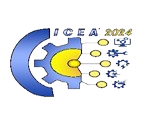About
Tripoli is the capital and largest city of Libya, with a population of about 1.18 million people in 2019. It is located in the northwest of Libya on the edge of the desert, on a point of rocky land projecting into the Mediterranean Sea and forming a bay. It includes the port of Tripoli and the country’s largest commercial and manufacturing center. It is also the site of the University of Tripoli.
Tripoli was founded in the 7th century BC by the Phoenicians, who gave it the Libyco-Berber name Oyat before passing into the hands of the Greek rulers of Cyrenaica as Oea. Due to the city’s long history, there are many sites of archeological significance in Tripoli. Tripoli may also refer to the sha’biyah (top-level administrative division in the Libyan system), the Tripoli District.
The city was founded in the 7th century BC by the Phoenicians, who gave it the Libyco-Berber name Oyat, suggesting that the city may have been built upon an existing native Berber city. The Phoenicians were probably attracted to the site by its natural harbor, flanked on the western shore by the small, easily defensible peninsula, on which they established their colony. The city then passed into the hands of the Greek rulers of Cyrenaica as Oea. Cyrene was a colony on the North African shore, a bit east of Tambroli and halfway to Egypt. The Carthaginians later wrested it again from the Greeks.
Get in
Mitiga International Airport (IATA: MJI, ICAO: HLLM) (مطار معيتيقة الدولي) is an airport in Libya, located about 8 kilometres (5 miles) east of Tripoli‘s city centre.
The airport has a diverse international history and has been known by a variety of names. It was originally built in 1923 as an Italian air force base called aeroporto militare di Mellaha. It became a German air base during World War II. The airbase was captured by the British 8th Army in January 1943 and transferred to the control of the US Army Air Forces, who called it Mellaha AAF until 1945, when they renamed it Wheelus Air Base for a US airman killed that year. American use continued until the 1969 Libyan coup d’état and the subsequent expiration of the lease. When the Americans left, the base was renamed Okba Ben Nafi Air Base (قاعدة عقبة بن نافع الجوية) after the Islamic general who conquered North Africa. It was used by both the Libyan and Soviet air forces. The United States bombed the base in 1986 during Operation El Dorado Canyon. In 1995, the air base was converted to a second civilian airport for Tripoli, and was given its current name.
Get around
Taxis in Libya are interesting. They are either minibusses that travel around a predefined route or black and white cars with taxi signs. Stick with the cars. Taxi travel is very cheap. Try to sit in the back as the journeys can be somewhat exciting when in the passenger seat when drivers tend to turn across traffic lanes. The taxi drivers are like most European taxi drivers. They enjoy sharing their opinions with you, even if you can’t understand them – but, as with most of the people in Tripoli, they are friendly, and they do try to make you feel welcome.
Recently, a new a Rahal, a mobile application connecting a driver to a rider like Uber and Careem, has launched in Libya the end of 2018 to support Libya’s public transportation. thus it’s a great option to use this application in order to get anywhere in the city of Tripoli.
Hotels
Hostels in Libya are available in most major towns, with a few in the city of Tripoli itself. below is a list of Hostels in available in the city of Tripoli:
- Radisson Blu Al Mahary Hotel
Set off of Al-Shat road, this refined hotel overlooking the Mediterranean Sea is 2 km from both the Red Castle Museum and the Martyrs’ Square, Tripoli.
- Corinthia Hotel Tripoli
Set off of Al-Shat road, this refined hotel overlooking the Mediterranean Sea is 1 km from both the Red Castle Museum and the Martyrs’ Square, Tripoli.

